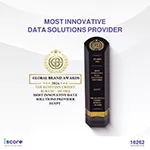Finance
Parametric Insurance: A Fast-Track Solution to Climate Disaster Recovery

- Parametric insurance provides very quick, defined payouts based on measurable climatic triggers that help communities respond faster to disasters.
- This will enhance climate resilience within vulnerable areas through flexible financial support for immediate recovery and long-term rebuilding.
Current traditional insurance models are failing to manage the rapidly rising frequency and severity of weather-related disasters. Parametric ports the future of insurance, enabling businesses to adapt better to the climatic risks that threaten their existence. But what is parametric insurance, and how does it subject factors to better resilience towards climate change?
Understanding Parametric Insurance
The parametric insurance plan provides a level of coverage that deviates from other insurance policies. Unlike conventional insurance, wherein the insured party will be compensated for losses that have truly been suffered following a nosedive into a catastrophe, payout under such insurance depends on the occurrence of a specific condition or “trigger.” Such triggering events are synonymous with specific measurable parameters, for instance, wind speeds, rainfalls, or magnitudes on the Richter scale in case of earthquakes.
Just like if a hurricane caused winds of over one hundred twenty miles per hour in a particular area, the insured person will get a certain payout without needing to assess whatever damage may be caused. This is not the same as traditional insurance, which requires assessing damage before payment can be made process that may take weeks or even months.
The Role of Parametric Insurance in Building Climate Resilience
Climate resilience has relied on parametric insurance as an important lifeline for communities that are prone to natural calamities. Speedy payout is its single most valuable proposition. After a hurricane or a drought, immediate responses will require a raw cash option that parametric insurance rules in. Thus, for rescue efforts, funds become available, allowing immediate assistance and speeding up recovery for communities.
Parametric insurance is crucial for countries in the Global South which are generally most severely affected by climate events without the financial infrastructure to address them. It links the occurrence of a climate disaster to the actual delivery of aid through climate data and therefore captures the financial effect of these events. Such insurance enables faster recovery and lessens the long-term impacts of climate events.
Climate Resilience Adaptation and Transition in the Insurance Space
As the climate crisis deepens further, the traditional model of insurance becomes less and less sustainable, especially in the more climate-affected areas. The cost overruns involved in damage assessment, claims management, and reconstruction in risk-prone areas have compelled insurance companies to find new ways of doing things. One new kind of insurance-pricing mechanism is parametric insurance, which gives evidence that the industry is thinking forward in having a closer look at itself concerning climate risk realities.
One more thing is that the flexibility in using the funds is way beyond that of traditional insurance policies, which ask for proof of damage about what could specifically be covered under benefits. Thus, while parametric insurance funds can meet a myriad of needs providing immediate assistance during emergencies to offering support for sustained efforts in reconstruction-long-term planning can still be warranted. For insured parties, this means being able to direct resources to where they are most needed.
Benefits for Developing Nations
Parametric insurance promises to be an entirely new and innovation-inspiring solution for developing countries threatened by climate change’s significance to economic robustness and public health. If a disaster occurs, it will ensure to have funds ahead of time, ready to prepare for it while ensuring that immediate response measures, evacuation, humanitarian aid, infrastructure repairs, etc., can be executed rapidly.
As a case in point, the Commonwealth Secretariat has avidly advocated the use of parametric insurance in small island states and other vulnerable areas. These partnerships will result in specific-designed parametric insurances that will address the disaster needs of the regions for improved sustainability and scalability in disaster management.
Innovation and Future Directions
The future of parametric insurance is bright with the changing technology toward using satellite and artificial intelligence to increase the accuracy of climate data. Such development will, in turn, help parametric insurance become much more effective in the upcoming years, reflecting precision in predicting events and faster payment.
Moreover, parametric insurance will be an increasingly popular solution in the future as it lends itself to creative approaches that the insurance industry continues to explore to connect capital with climate risk. Aon and Liberty Mutual are at the forefront of the movement to draw from parametric models that tackle both catastrophic risk and cost in the disaster. These developments are pivotal in ensuring global communities are better prepared to cope with the anticipated rise in the number of extreme weather events.





















































